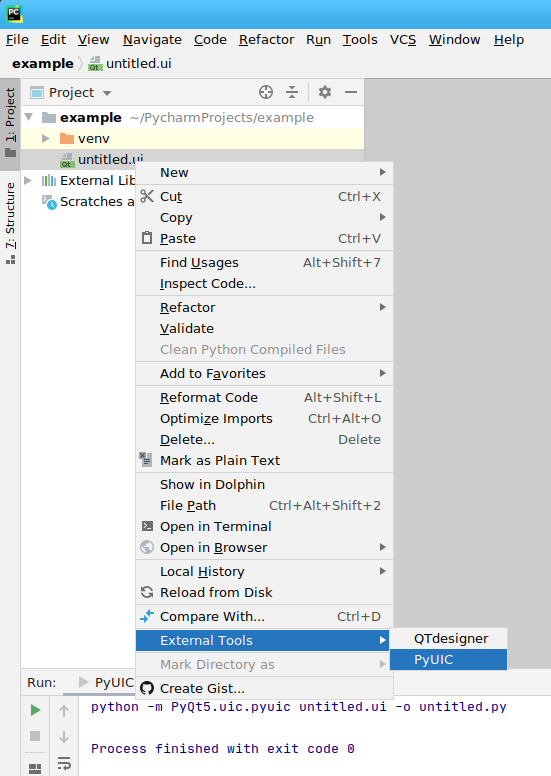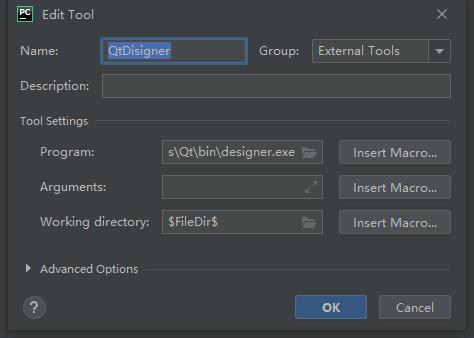
The benefit of using the second method is the auto-completion that the IDE will provide since all of your widgets are imported, while the first method you just load the. If you run this code, you should see the same window again as we did in the first method. from PyQt5 import QtWidgetsįrom mydesign import Ui_MainWindow # importing our generated file The pyuic5 stands for Python user interface converter version 5. Now, let’s import that file to show our window. Yes! That creates a new file with the name mydesign.py. ui file to a Python code: $ pyuic5 mydesign.ui -o mydesign.py Now, let’s try the second way by converting the. If you used app.exec() directly, the application would send zero, which means success, and this will happen even if the application crashed.
#Pip install pyqt5 uic code#
We used sys.exit(app.exec()) instead of using app.exec() directly to send the correct status code to the parent process or the calling process. That means the ui file loaded successfully! If you run your code, you should see a window with nothing but a label. Win = uic.loadUi("mydesign.ui") #specify the location of your. ui file in your Python code, you can use the loadUI() function from uic like this: from PyQt5 import QtWidgets, uic Now, to use this design, you have two ways: Then from the file menu, click save PyQt5 designer will export your form into an XML file with. Open PyQt5 designer, and choose Main Window template and click create button. In this tutorial, we will use the PyQt5 designer, but before we dig deeper, let’s see how we will use the generated design from the PyQt5 designer. So we have three types of templates, what is the difference? Widget: Creates a widget that is inherited from QWidget class, unlike the Dialogs templates which inherit from QDialog class.Main Window: Creates a window with a menu bar and a toolbar and inherited from QMainWindow.


#Pip install pyqt5 uic download#
Now you are ready to download and install PyQt5 source. To install SIP, run the following command: $ pip3 install PyQt5-sip

So to install PyQt5 from source, you need at first to install SIP. The tool that makes this binding is called SIP. To install PyQt5 from source, you have to do the following:Īs you might know, PyQt5 is a Python binding for the famous library Qt that is written in C++.

If no errors appeared, that means you have successfully installed PyQt5, but if you got errors, you might be using an unsupported version of Python. To ensure the successful installation, run the following Python code: import PyQt5 To install PyQt5 using pip, run the following command: $ pip3 install PyQt5
#Pip install pyqt5 uic free#
PyQt5 has two versions, the commercial version and the free GPL version that we will use in this tutorial.


 0 kommentar(er)
0 kommentar(er)
